Report on Effective Communication: Forms, Traits, Barriers & Solutions
VerifiedAdded on 2023/06/04
|20
|2602
|124
Report
AI Summary
This report provides a detailed analysis of effective communication, exploring various forms such as verbal, non-verbal, written, and visual communication. It outlines the key characteristics of effective communication, including the 7Cs: clarity, conciseness, concreteness, correctness, consideration, completeness, and courtesy. The report also identifies common communication barriers, such as linguistic, emotional, physical, cultural, organizational, attitudinal, perceptual, and physiological barriers, and provides strategies to overcome these obstacles. These strategies include clarifying ideas, ensuring good timing, using understandable language, maintaining concise and error-free messages, checking for understanding, paying attention to body language and tone, listening actively, avoiding interruptions, and creating judgment-free messages. The conclusion emphasizes the importance of effective communication skills for personal and professional success, highlighting how mastering these skills can lead to stronger relationships and career advancement.
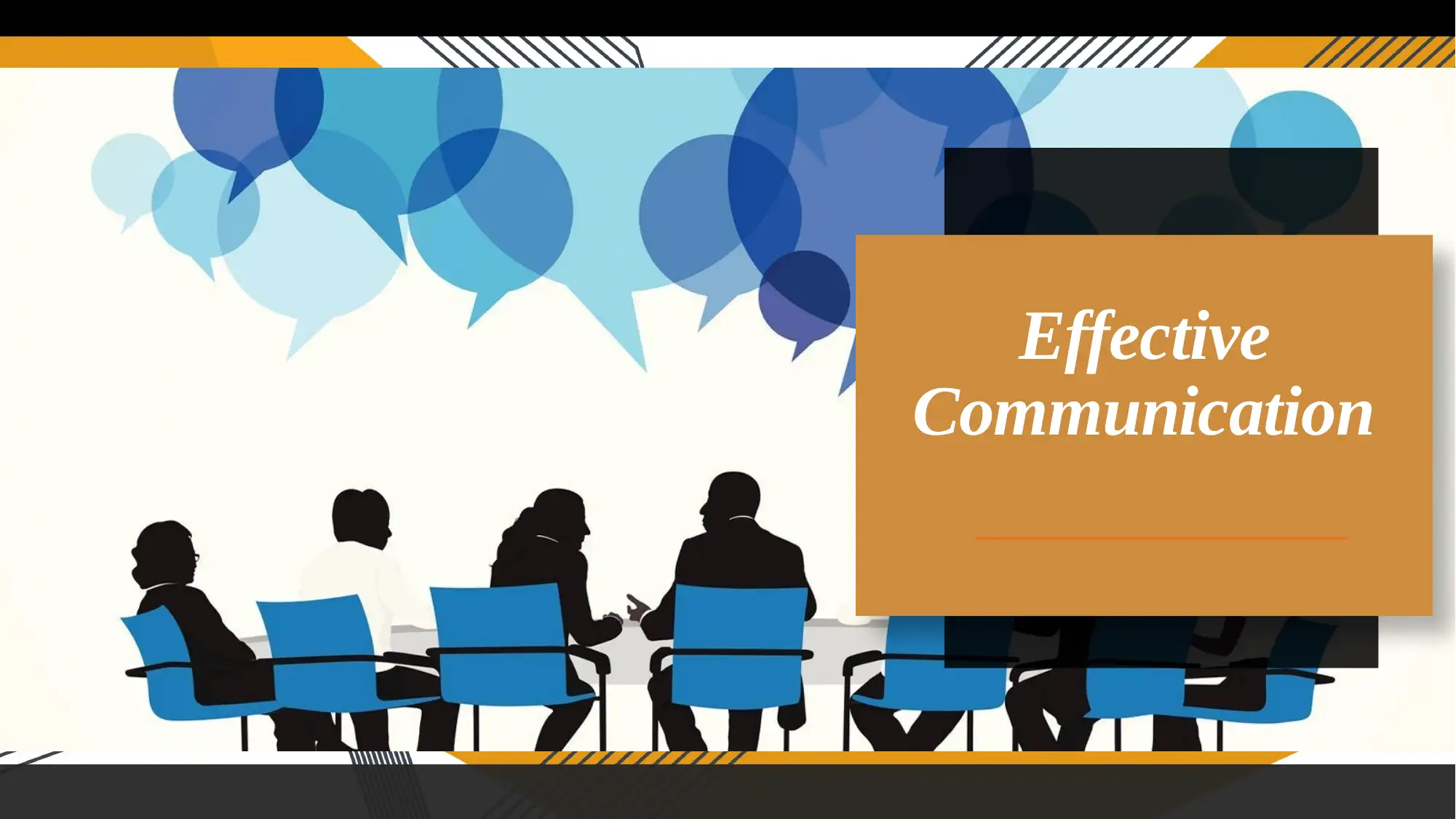
Effective
Communication
Communication
Paraphrase This Document
Need a fresh take? Get an instant paraphrase of this document with our AI Paraphraser
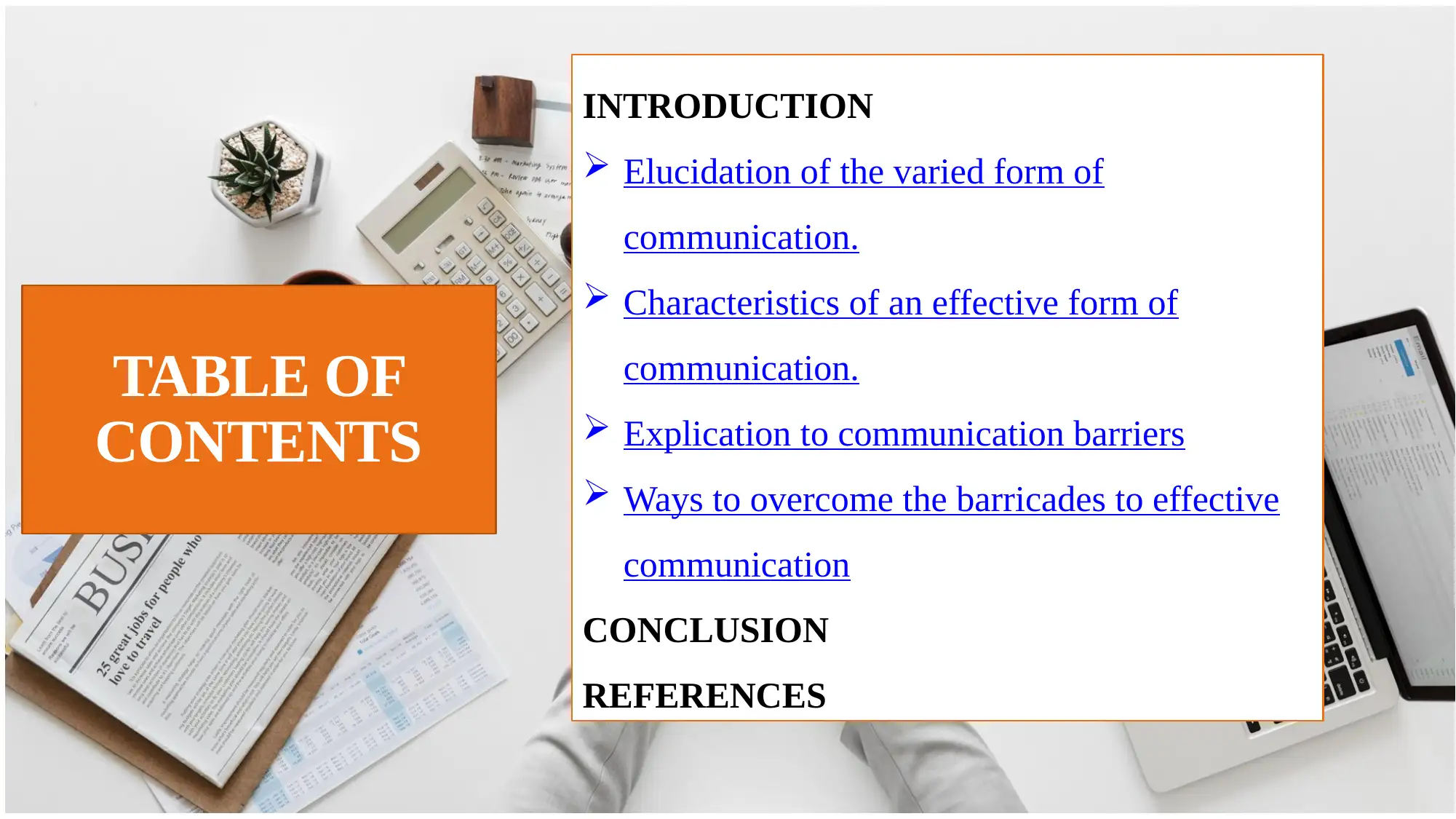
TABLE OF
CONTENTS
INTRODUCTION
Elucidation of the varied form of
communication.
Characteristics of an effective form of
communication.
Explication to communication barriers
Ways to overcome the barricades to effective
communication
CONCLUSION
REFERENCES
CONTENTS
INTRODUCTION
Elucidation of the varied form of
communication.
Characteristics of an effective form of
communication.
Explication to communication barriers
Ways to overcome the barricades to effective
communication
CONCLUSION
REFERENCES
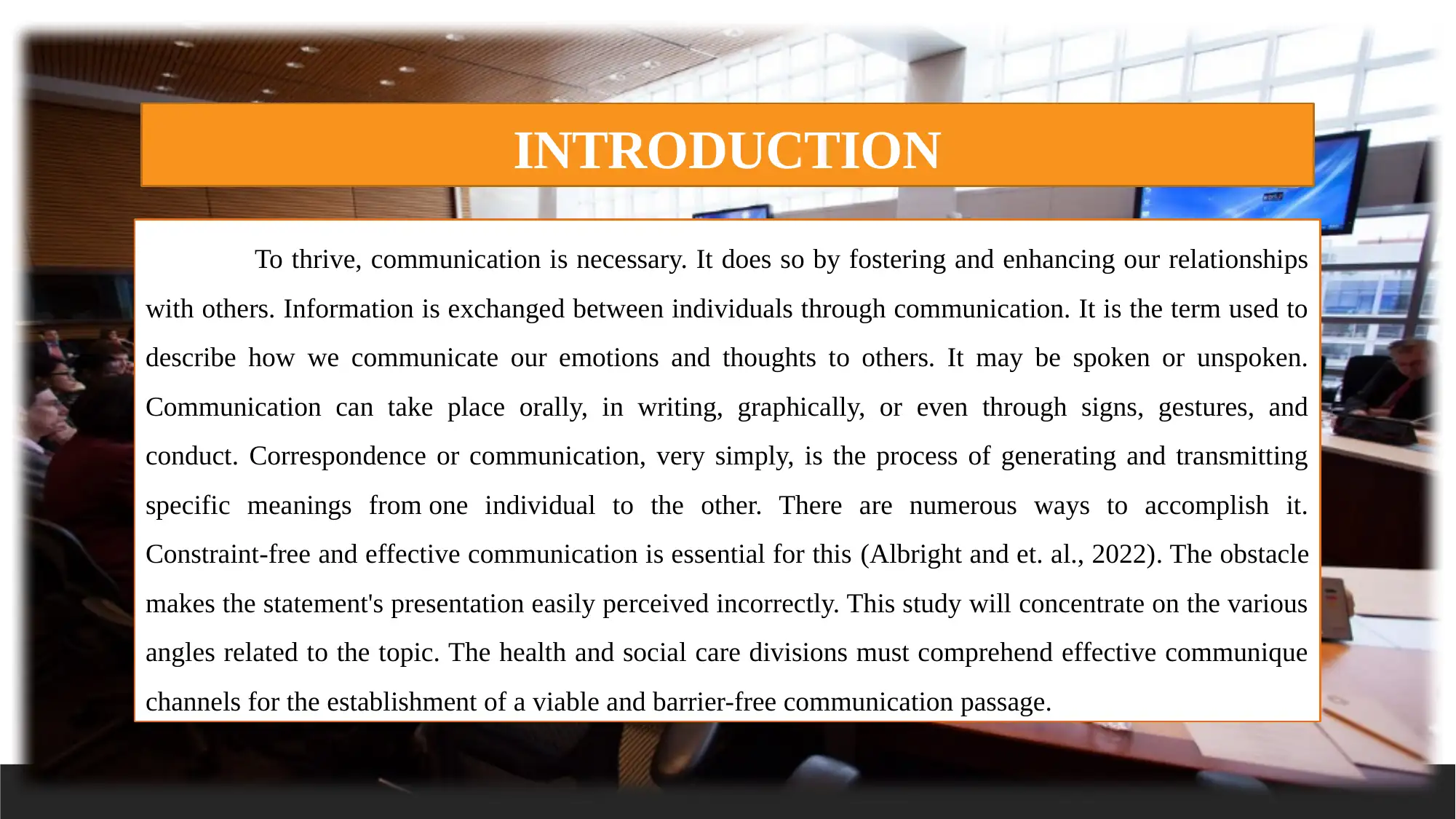
INTRODUCTION
To thrive, communication is necessary. It does so by fostering and enhancing our relationships
with others. Information is exchanged between individuals through communication. It is the term used to
describe how we communicate our emotions and thoughts to others. It may be spoken or unspoken.
Communication can take place orally, in writing, graphically, or even through signs, gestures, and
conduct. Correspondence or communication, very simply, is the process of generating and transmitting
specific meanings from one individual to the other. There are numerous ways to accomplish it.
Constraint-free and effective communication is essential for this (Albright and et. al., 2022). The obstacle
makes the statement's presentation easily perceived incorrectly. This study will concentrate on the various
angles related to the topic. The health and social care divisions must comprehend effective communique
channels for the establishment of a viable and barrier-free communication passage.
To thrive, communication is necessary. It does so by fostering and enhancing our relationships
with others. Information is exchanged between individuals through communication. It is the term used to
describe how we communicate our emotions and thoughts to others. It may be spoken or unspoken.
Communication can take place orally, in writing, graphically, or even through signs, gestures, and
conduct. Correspondence or communication, very simply, is the process of generating and transmitting
specific meanings from one individual to the other. There are numerous ways to accomplish it.
Constraint-free and effective communication is essential for this (Albright and et. al., 2022). The obstacle
makes the statement's presentation easily perceived incorrectly. This study will concentrate on the various
angles related to the topic. The health and social care divisions must comprehend effective communique
channels for the establishment of a viable and barrier-free communication passage.
⊘ This is a preview!⊘
Do you want full access?
Subscribe today to unlock all pages.

Trusted by 1+ million students worldwide
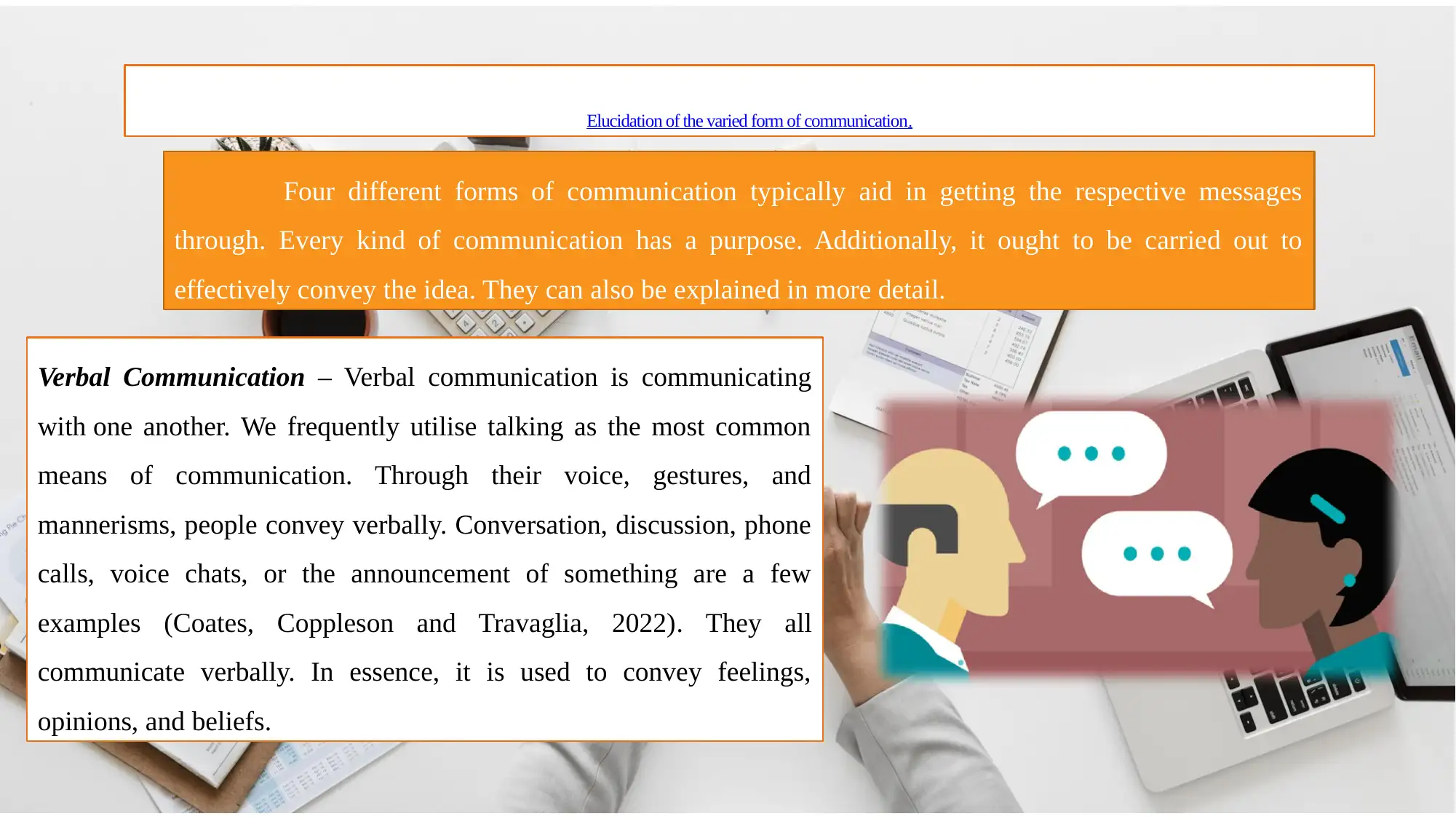
Elucidation of the varied form of communication.
Four different forms of communication typically aid in getting the respective messages
through. Every kind of communication has a purpose. Additionally, it ought to be carried out to
effectively convey the idea. They can also be explained in more detail.
Verbal Communication – Verbal communication is communicating
with one another. We frequently utilise talking as the most common
means of communication. Through their voice, gestures, and
mannerisms, people convey verbally. Conversation, discussion, phone
calls, voice chats, or the announcement of something are a few
examples (Coates, Coppleson and Travaglia, 2022). They all
communicate verbally. In essence, it is used to convey feelings,
opinions, and beliefs.
Four different forms of communication typically aid in getting the respective messages
through. Every kind of communication has a purpose. Additionally, it ought to be carried out to
effectively convey the idea. They can also be explained in more detail.
Verbal Communication – Verbal communication is communicating
with one another. We frequently utilise talking as the most common
means of communication. Through their voice, gestures, and
mannerisms, people convey verbally. Conversation, discussion, phone
calls, voice chats, or the announcement of something are a few
examples (Coates, Coppleson and Travaglia, 2022). They all
communicate verbally. In essence, it is used to convey feelings,
opinions, and beliefs.
Paraphrase This Document
Need a fresh take? Get an instant paraphrase of this document with our AI Paraphraser
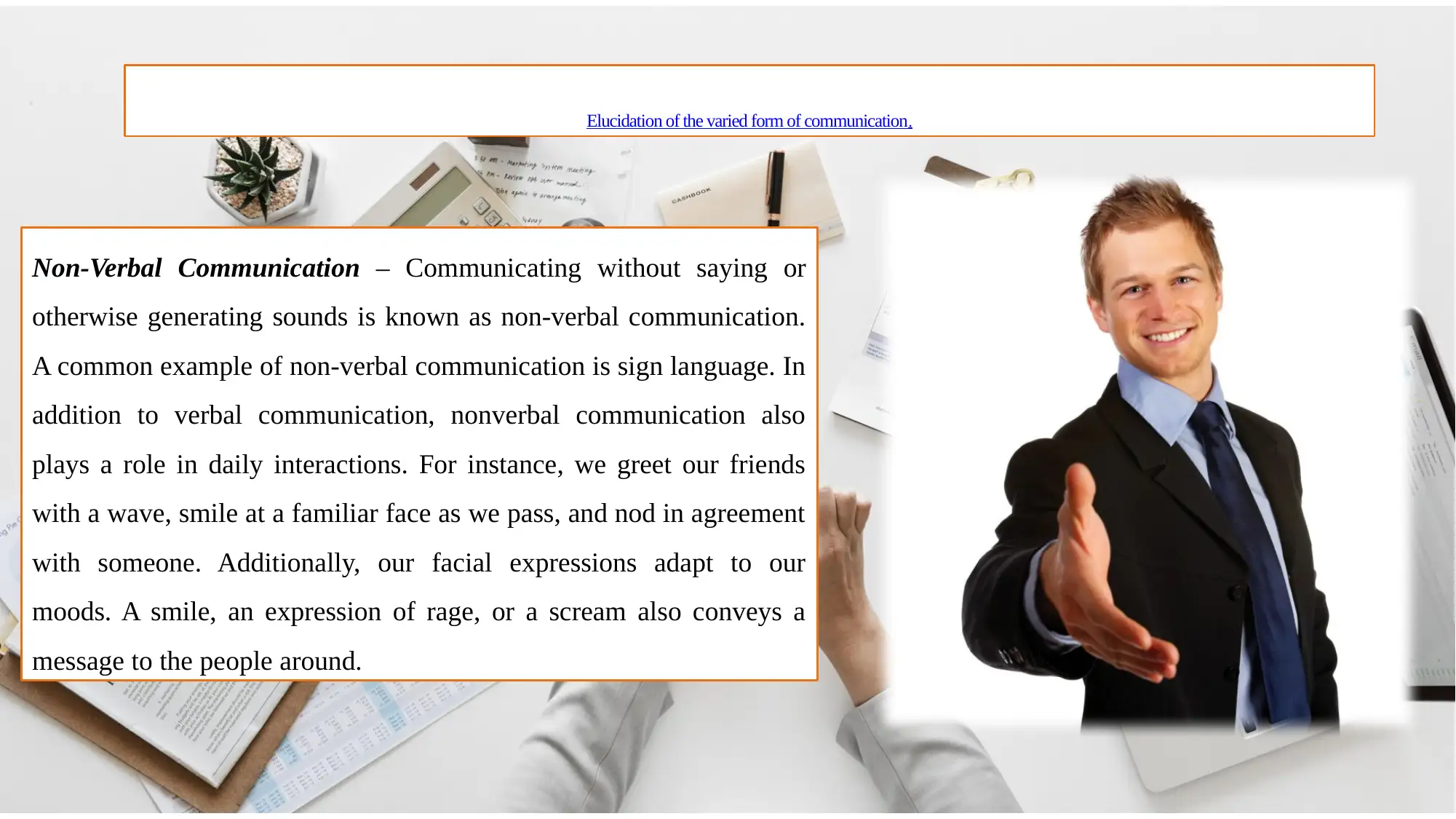
Elucidation of the varied form of communication.
Non-Verbal Communication – Communicating without saying or
otherwise generating sounds is known as non-verbal communication.
A common example of non-verbal communication is sign language. In
addition to verbal communication, nonverbal communication also
plays a role in daily interactions. For instance, we greet our friends
with a wave, smile at a familiar face as we pass, and nod in agreement
with someone. Additionally, our facial expressions adapt to our
moods. A smile, an expression of rage, or a scream also conveys a
message to the people around.
Non-Verbal Communication – Communicating without saying or
otherwise generating sounds is known as non-verbal communication.
A common example of non-verbal communication is sign language. In
addition to verbal communication, nonverbal communication also
plays a role in daily interactions. For instance, we greet our friends
with a wave, smile at a familiar face as we pass, and nod in agreement
with someone. Additionally, our facial expressions adapt to our
moods. A smile, an expression of rage, or a scream also conveys a
message to the people around.
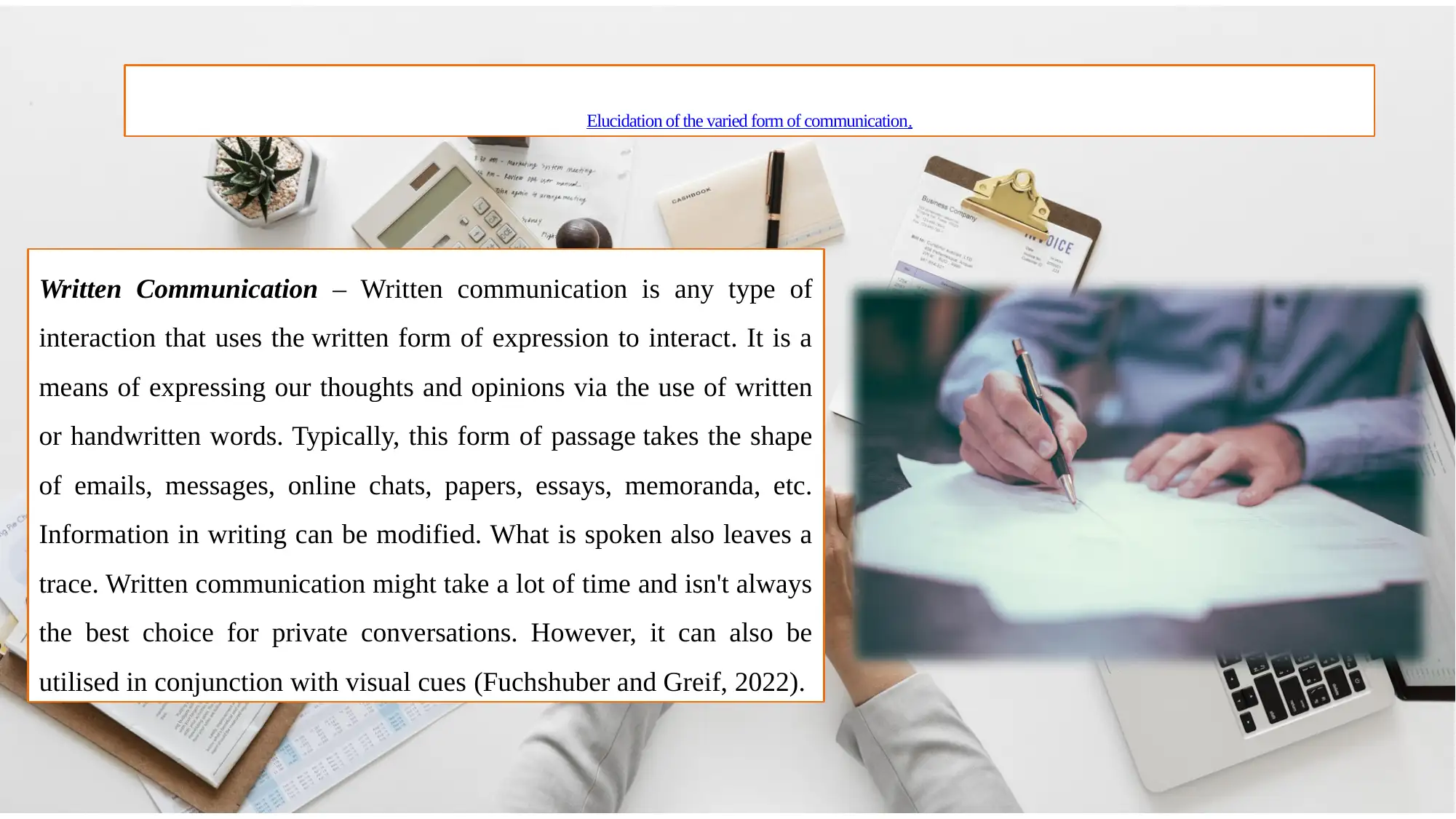
Elucidation of the varied form of communication.
Written Communication – Written communication is any type of
interaction that uses the written form of expression to interact. It is a
means of expressing our thoughts and opinions via the use of written
or handwritten words. Typically, this form of passage takes the shape
of emails, messages, online chats, papers, essays, memoranda, etc.
Information in writing can be modified. What is spoken also leaves a
trace. Written communication might take a lot of time and isn't always
the best choice for private conversations. However, it can also be
utilised in conjunction with visual cues (Fuchshuber and Greif, 2022).
Written Communication – Written communication is any type of
interaction that uses the written form of expression to interact. It is a
means of expressing our thoughts and opinions via the use of written
or handwritten words. Typically, this form of passage takes the shape
of emails, messages, online chats, papers, essays, memoranda, etc.
Information in writing can be modified. What is spoken also leaves a
trace. Written communication might take a lot of time and isn't always
the best choice for private conversations. However, it can also be
utilised in conjunction with visual cues (Fuchshuber and Greif, 2022).
⊘ This is a preview!⊘
Do you want full access?
Subscribe today to unlock all pages.

Trusted by 1+ million students worldwide
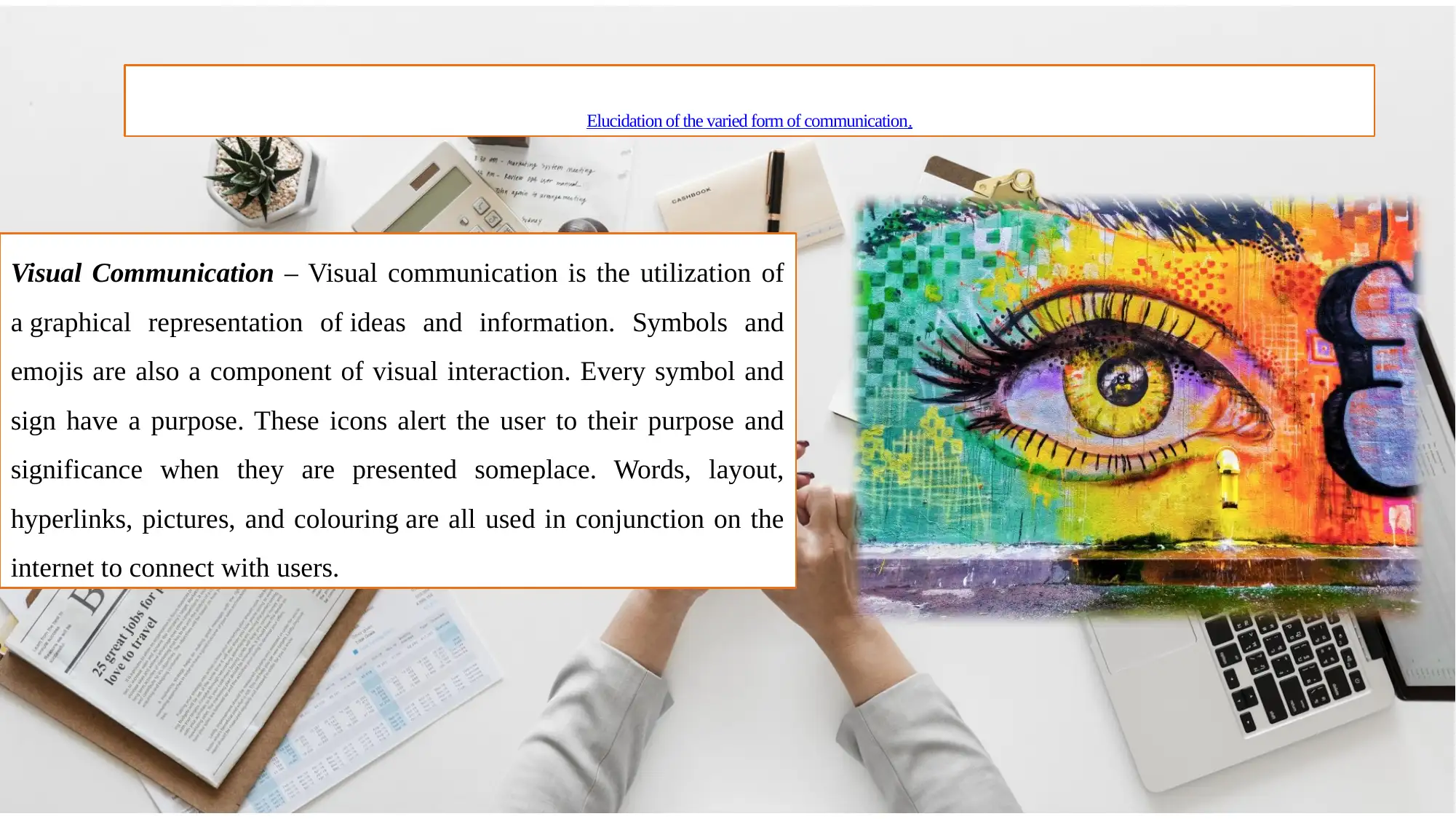
Elucidation of the varied form of communication.
Visual Communication – Visual communication is the utilization of
a graphical representation of ideas and information. Symbols and
emojis are also a component of visual interaction. Every symbol and
sign have a purpose. These icons alert the user to their purpose and
significance when they are presented someplace. Words, layout,
hyperlinks, pictures, and colouring are all used in conjunction on the
internet to connect with users.
Visual Communication – Visual communication is the utilization of
a graphical representation of ideas and information. Symbols and
emojis are also a component of visual interaction. Every symbol and
sign have a purpose. These icons alert the user to their purpose and
significance when they are presented someplace. Words, layout,
hyperlinks, pictures, and colouring are all used in conjunction on the
internet to connect with users.
Paraphrase This Document
Need a fresh take? Get an instant paraphrase of this document with our AI Paraphraser
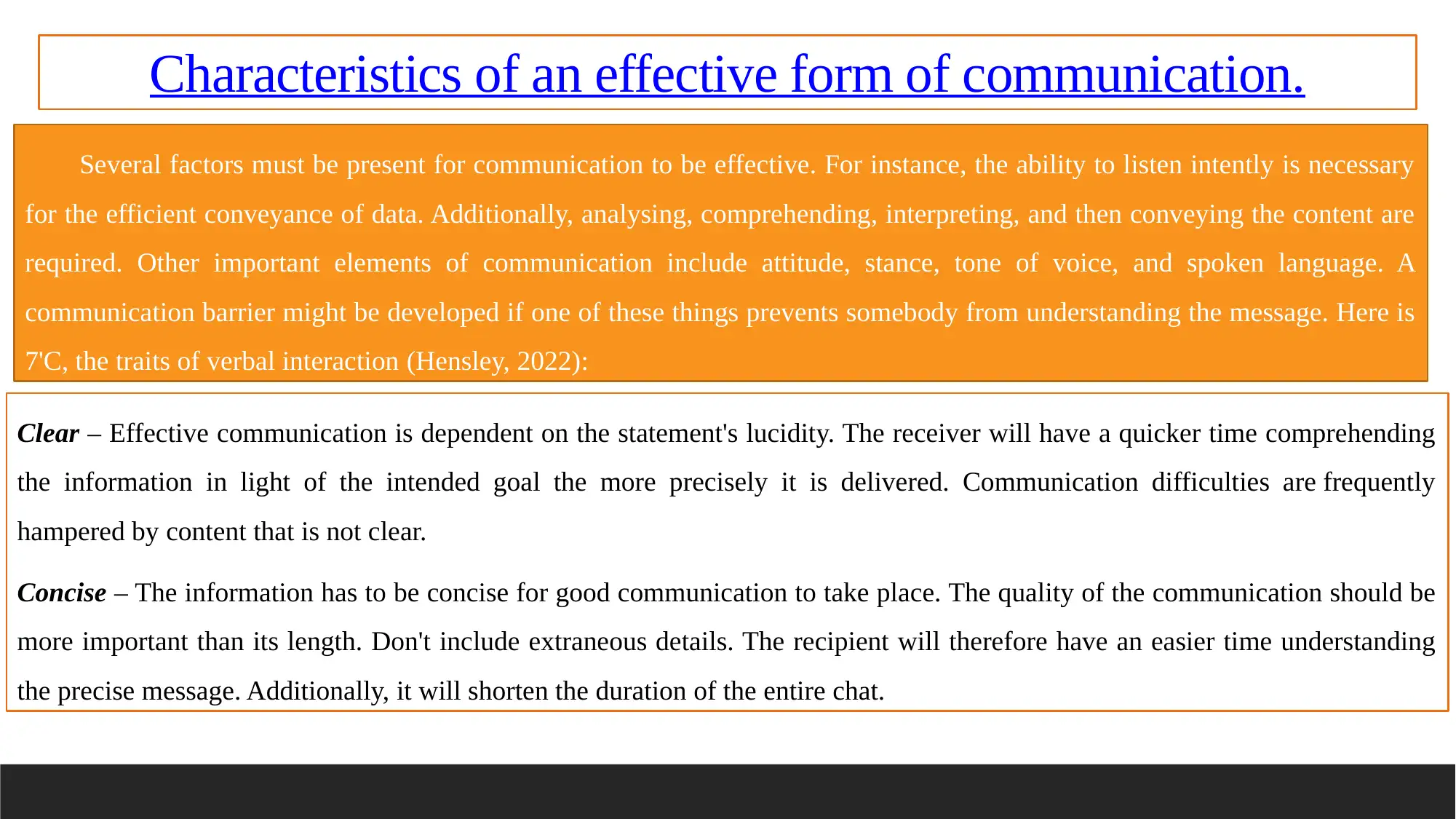
Characteristics of an effective form of communication.
Several factors must be present for communication to be effective. For instance, the ability to listen intently is necessary
for the efficient conveyance of data. Additionally, analysing, comprehending, interpreting, and then conveying the content are
required. Other important elements of communication include attitude, stance, tone of voice, and spoken language. A
communication barrier might be developed if one of these things prevents somebody from understanding the message. Here is
7'C, the traits of verbal interaction (Hensley, 2022):
Clear – Effective communication is dependent on the statement's lucidity. The receiver will have a quicker time comprehending
the information in light of the intended goal the more precisely it is delivered. Communication difficulties are frequently
hampered by content that is not clear.
Concise – The information has to be concise for good communication to take place. The quality of the communication should be
more important than its length. Don't include extraneous details. The recipient will therefore have an easier time understanding
the precise message. Additionally, it will shorten the duration of the entire chat.
Several factors must be present for communication to be effective. For instance, the ability to listen intently is necessary
for the efficient conveyance of data. Additionally, analysing, comprehending, interpreting, and then conveying the content are
required. Other important elements of communication include attitude, stance, tone of voice, and spoken language. A
communication barrier might be developed if one of these things prevents somebody from understanding the message. Here is
7'C, the traits of verbal interaction (Hensley, 2022):
Clear – Effective communication is dependent on the statement's lucidity. The receiver will have a quicker time comprehending
the information in light of the intended goal the more precisely it is delivered. Communication difficulties are frequently
hampered by content that is not clear.
Concise – The information has to be concise for good communication to take place. The quality of the communication should be
more important than its length. Don't include extraneous details. The recipient will therefore have an easier time understanding
the precise message. Additionally, it will shorten the duration of the entire chat.
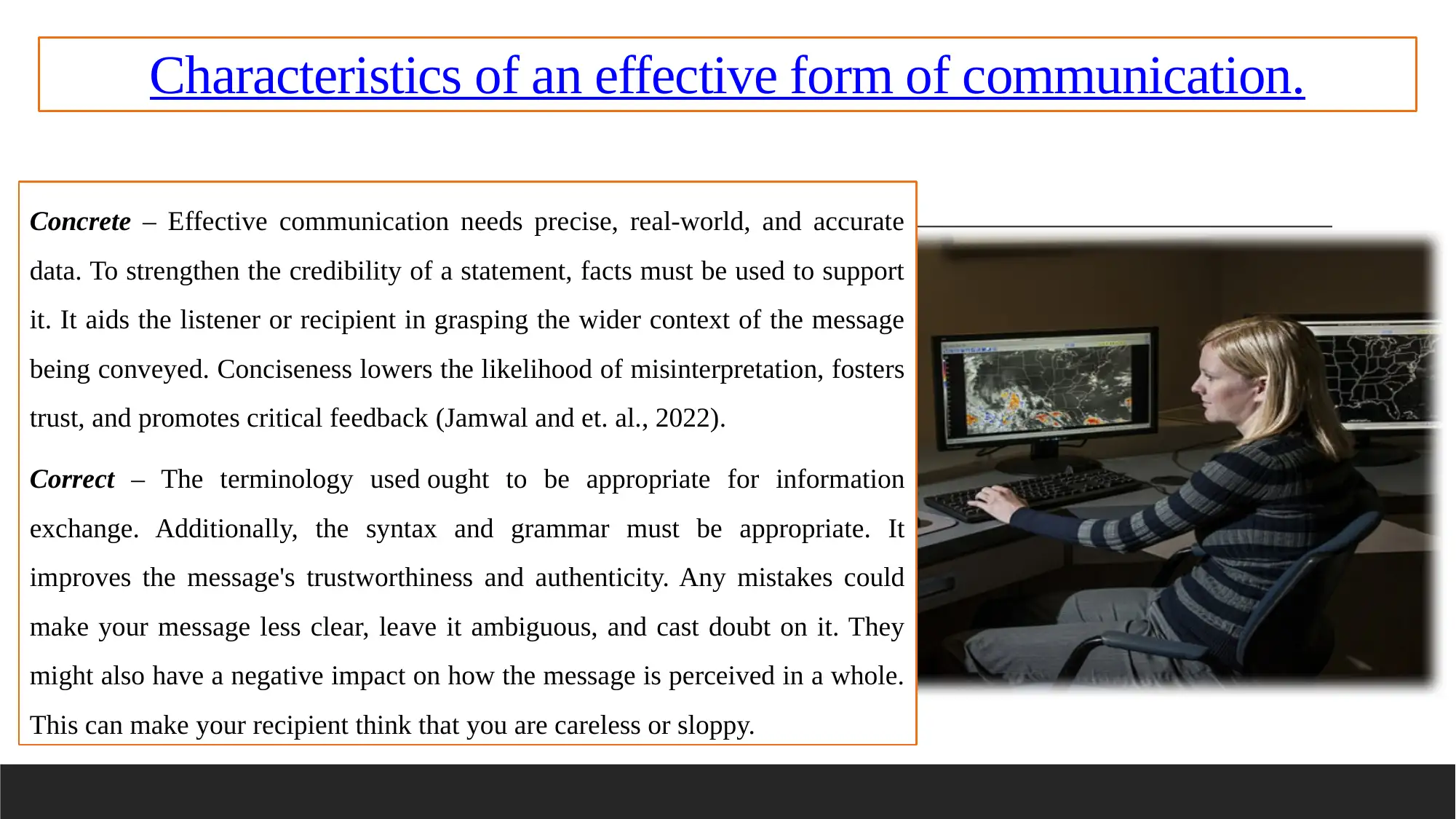
Characteristics of an effective form of communication.
Concrete – Effective communication needs precise, real-world, and accurate
data. To strengthen the credibility of a statement, facts must be used to support
it. It aids the listener or recipient in grasping the wider context of the message
being conveyed. Conciseness lowers the likelihood of misinterpretation, fosters
trust, and promotes critical feedback (Jamwal and et. al., 2022).
Correct – The terminology used ought to be appropriate for information
exchange. Additionally, the syntax and grammar must be appropriate. It
improves the message's trustworthiness and authenticity. Any mistakes could
make your message less clear, leave it ambiguous, and cast doubt on it. They
might also have a negative impact on how the message is perceived in a whole.
This can make your recipient think that you are careless or sloppy.
Concrete – Effective communication needs precise, real-world, and accurate
data. To strengthen the credibility of a statement, facts must be used to support
it. It aids the listener or recipient in grasping the wider context of the message
being conveyed. Conciseness lowers the likelihood of misinterpretation, fosters
trust, and promotes critical feedback (Jamwal and et. al., 2022).
Correct – The terminology used ought to be appropriate for information
exchange. Additionally, the syntax and grammar must be appropriate. It
improves the message's trustworthiness and authenticity. Any mistakes could
make your message less clear, leave it ambiguous, and cast doubt on it. They
might also have a negative impact on how the message is perceived in a whole.
This can make your recipient think that you are careless or sloppy.
⊘ This is a preview!⊘
Do you want full access?
Subscribe today to unlock all pages.

Trusted by 1+ million students worldwide
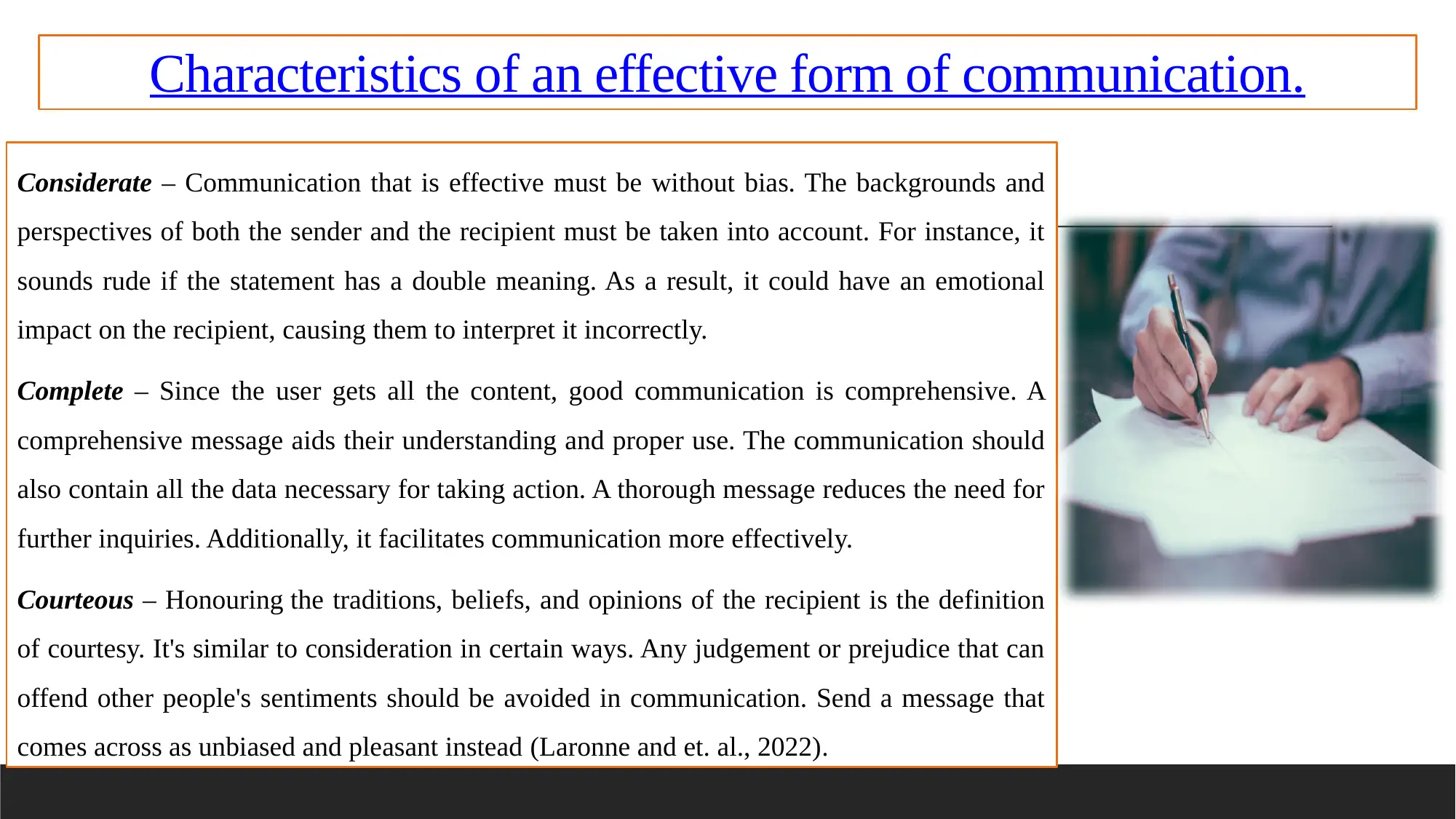
Characteristics of an effective form of communication.
Considerate – Communication that is effective must be without bias. The backgrounds and
perspectives of both the sender and the recipient must be taken into account. For instance, it
sounds rude if the statement has a double meaning. As a result, it could have an emotional
impact on the recipient, causing them to interpret it incorrectly.
Complete – Since the user gets all the content, good communication is comprehensive. A
comprehensive message aids their understanding and proper use. The communication should
also contain all the data necessary for taking action. A thorough message reduces the need for
further inquiries. Additionally, it facilitates communication more effectively.
Courteous – Honouring the traditions, beliefs, and opinions of the recipient is the definition
of courtesy. It's similar to consideration in certain ways. Any judgement or prejudice that can
offend other people's sentiments should be avoided in communication. Send a message that
comes across as unbiased and pleasant instead (Laronne and et. al., 2022).
Considerate – Communication that is effective must be without bias. The backgrounds and
perspectives of both the sender and the recipient must be taken into account. For instance, it
sounds rude if the statement has a double meaning. As a result, it could have an emotional
impact on the recipient, causing them to interpret it incorrectly.
Complete – Since the user gets all the content, good communication is comprehensive. A
comprehensive message aids their understanding and proper use. The communication should
also contain all the data necessary for taking action. A thorough message reduces the need for
further inquiries. Additionally, it facilitates communication more effectively.
Courteous – Honouring the traditions, beliefs, and opinions of the recipient is the definition
of courtesy. It's similar to consideration in certain ways. Any judgement or prejudice that can
offend other people's sentiments should be avoided in communication. Send a message that
comes across as unbiased and pleasant instead (Laronne and et. al., 2022).
Paraphrase This Document
Need a fresh take? Get an instant paraphrase of this document with our AI Paraphraser
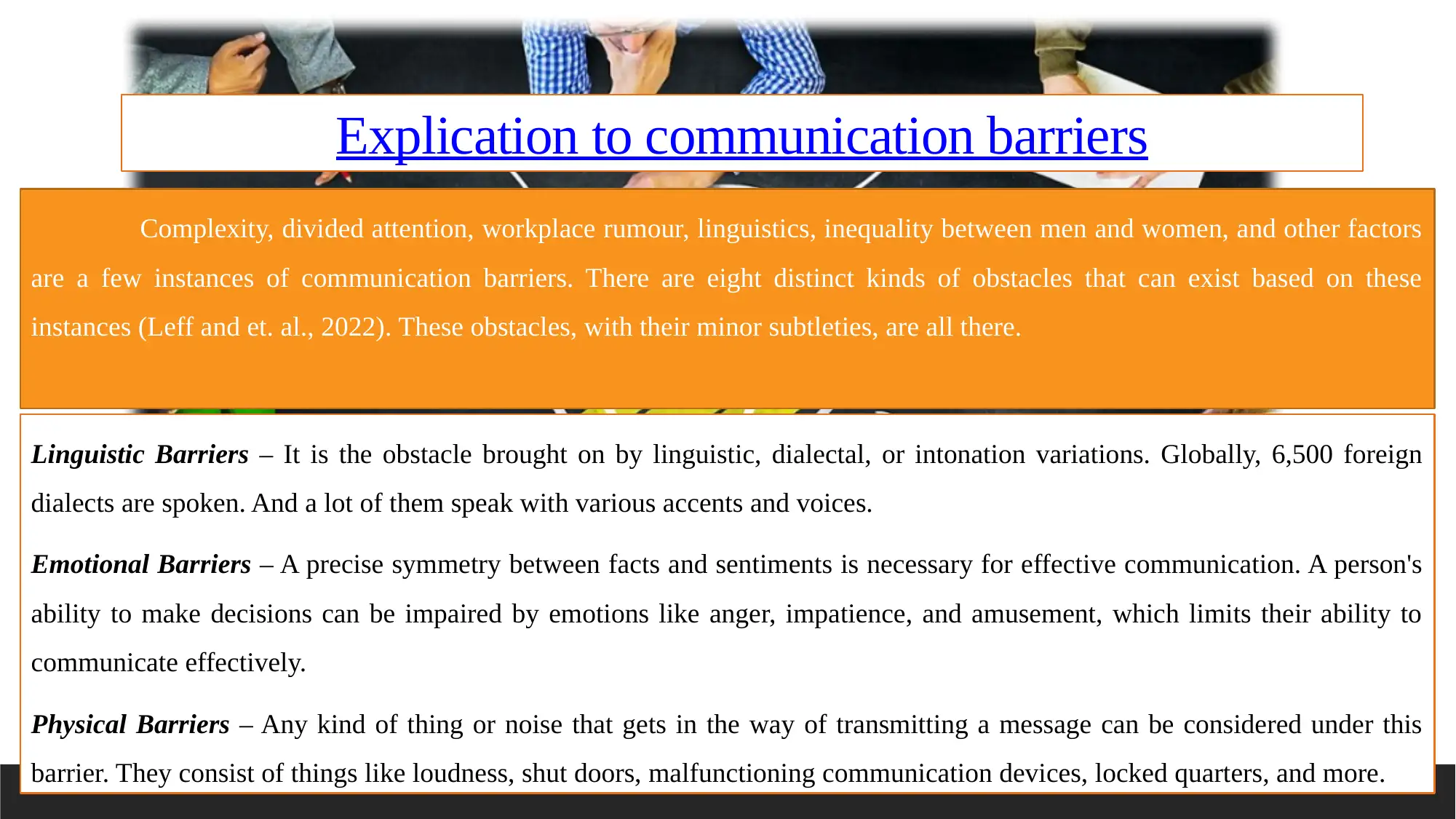
Explication to communication barriers
Complexity, divided attention, workplace rumour, linguistics, inequality between men and women, and other factors
are a few instances of communication barriers. There are eight distinct kinds of obstacles that can exist based on these
instances (Leff and et. al., 2022). These obstacles, with their minor subtleties, are all there.
Linguistic Barriers – It is the obstacle brought on by linguistic, dialectal, or intonation variations. Globally, 6,500 foreign
dialects are spoken. And a lot of them speak with various accents and voices.
Emotional Barriers – A precise symmetry between facts and sentiments is necessary for effective communication. A person's
ability to make decisions can be impaired by emotions like anger, impatience, and amusement, which limits their ability to
communicate effectively.
Physical Barriers – Any kind of thing or noise that gets in the way of transmitting a message can be considered under this
barrier. They consist of things like loudness, shut doors, malfunctioning communication devices, locked quarters, and more.
Complexity, divided attention, workplace rumour, linguistics, inequality between men and women, and other factors
are a few instances of communication barriers. There are eight distinct kinds of obstacles that can exist based on these
instances (Leff and et. al., 2022). These obstacles, with their minor subtleties, are all there.
Linguistic Barriers – It is the obstacle brought on by linguistic, dialectal, or intonation variations. Globally, 6,500 foreign
dialects are spoken. And a lot of them speak with various accents and voices.
Emotional Barriers – A precise symmetry between facts and sentiments is necessary for effective communication. A person's
ability to make decisions can be impaired by emotions like anger, impatience, and amusement, which limits their ability to
communicate effectively.
Physical Barriers – Any kind of thing or noise that gets in the way of transmitting a message can be considered under this
barrier. They consist of things like loudness, shut doors, malfunctioning communication devices, locked quarters, and more.
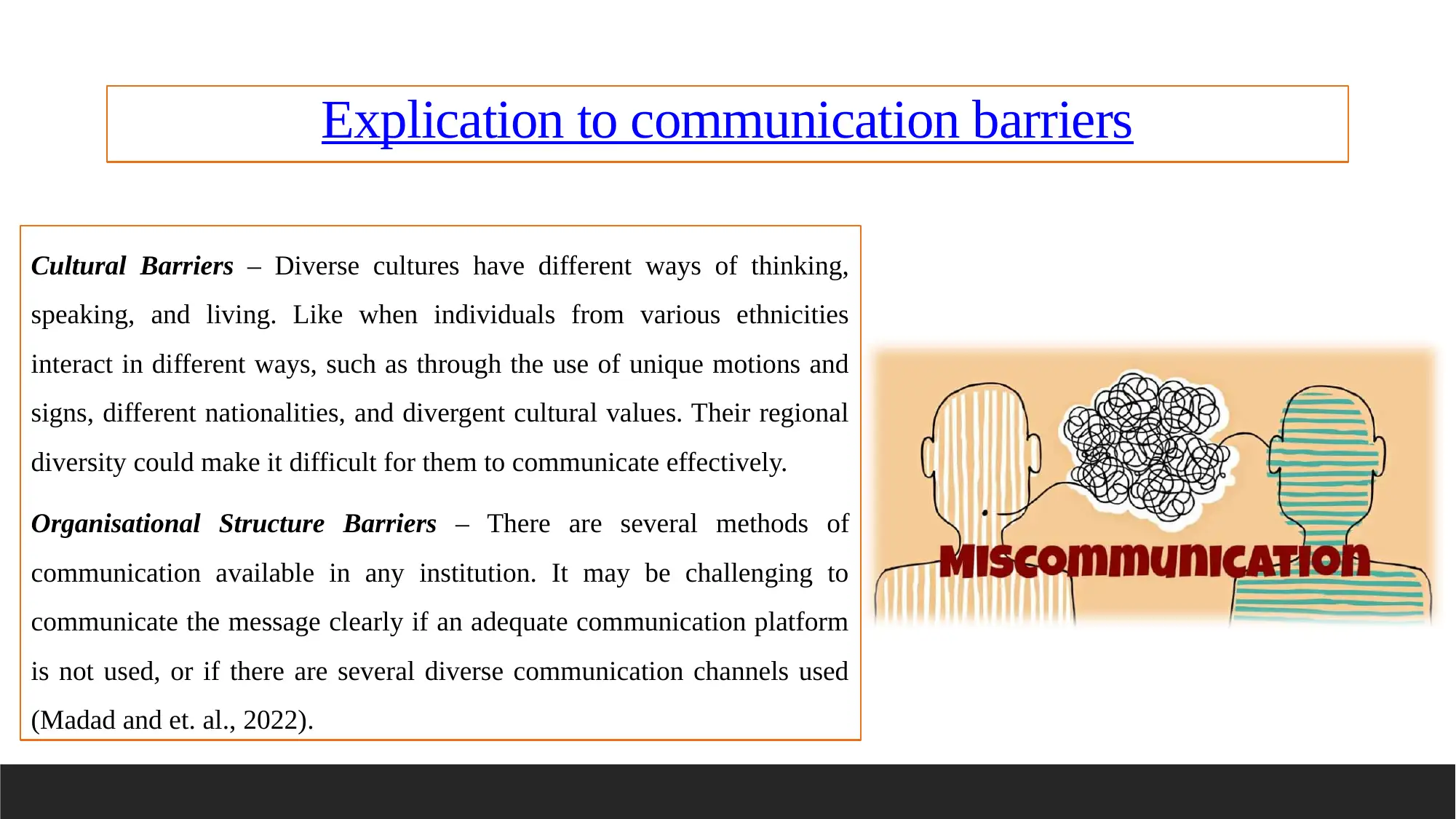
Cultural Barriers – Diverse cultures have different ways of thinking,
speaking, and living. Like when individuals from various ethnicities
interact in different ways, such as through the use of unique motions and
signs, different nationalities, and divergent cultural values. Their regional
diversity could make it difficult for them to communicate effectively.
Organisational Structure Barriers – There are several methods of
communication available in any institution. It may be challenging to
communicate the message clearly if an adequate communication platform
is not used, or if there are several diverse communication channels used
(Madad and et. al., 2022).
Explication to communication barriers
speaking, and living. Like when individuals from various ethnicities
interact in different ways, such as through the use of unique motions and
signs, different nationalities, and divergent cultural values. Their regional
diversity could make it difficult for them to communicate effectively.
Organisational Structure Barriers – There are several methods of
communication available in any institution. It may be challenging to
communicate the message clearly if an adequate communication platform
is not used, or if there are several diverse communication channels used
(Madad and et. al., 2022).
Explication to communication barriers
⊘ This is a preview!⊘
Do you want full access?
Subscribe today to unlock all pages.

Trusted by 1+ million students worldwide
1 out of 20
Related Documents
Your All-in-One AI-Powered Toolkit for Academic Success.
+13062052269
info@desklib.com
Available 24*7 on WhatsApp / Email
![[object Object]](/_next/static/media/star-bottom.7253800d.svg)
Unlock your academic potential
Copyright © 2020–2025 A2Z Services. All Rights Reserved. Developed and managed by ZUCOL.




